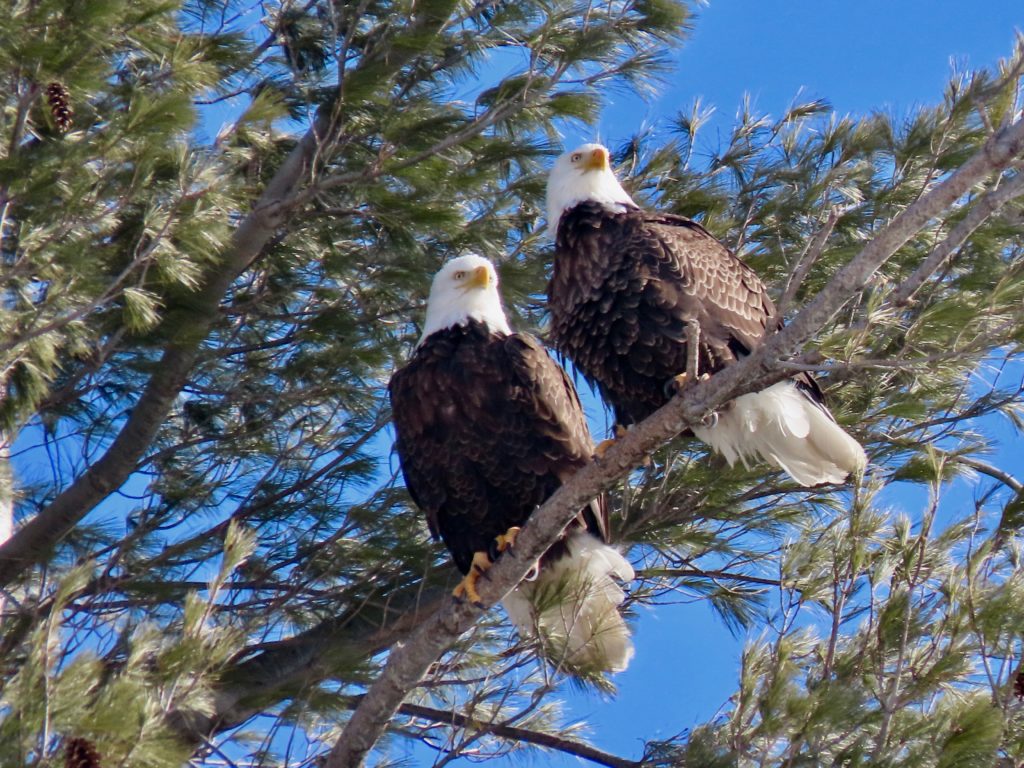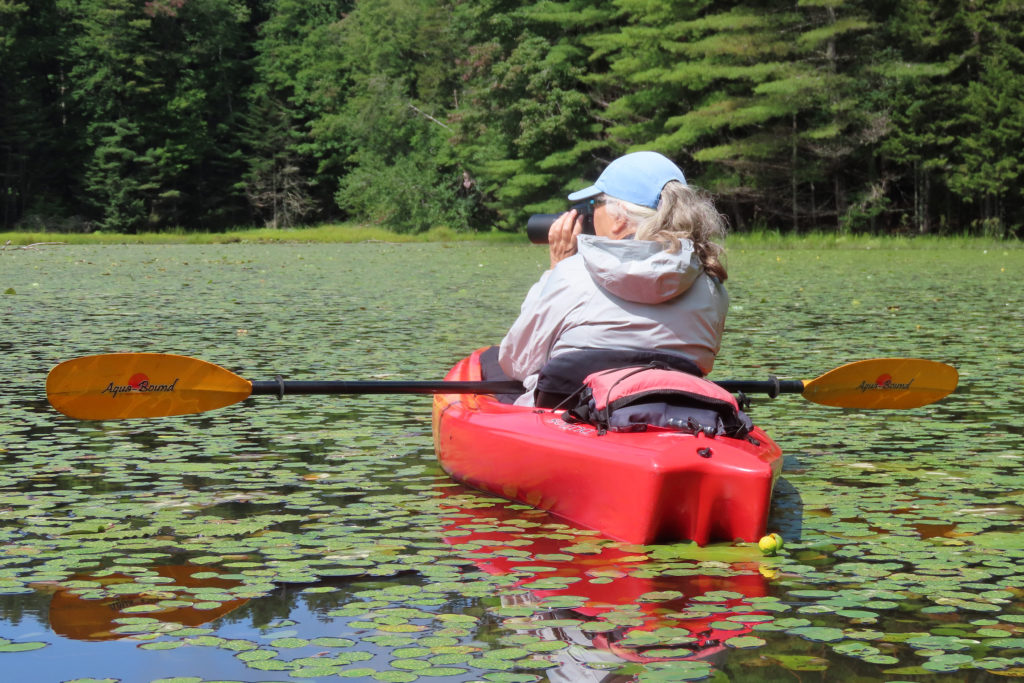Birding in the Deerfield Valley
I call myself a bird watcher, but if I am being completely honest, I am more of a bird noticer or casual bird watcher. I can identify several local birds. But again if we are being honest, many of them are the one-of-a-kind sort of birds. Like the blue jay and robin. Usually, I can narrow down the species and can identify a bird as a sparrow for example. Getting the correct type of sparrow is sometimes a case of a lucky guess!
Whether you are a beginner bird watcher or a pro, you will find many great places in Southern Vermont to see a wide variety of birds.
I put out a bird feeder in the winter and keep occasional notes of the different types of birds that swing by for the meager offerings of sunflower seeds and suet. I hike with a pair of binoculars just in case I might see a bird. Frankly, I do not have the patience to wait for a bird to come to me nor to wait for one to fly by. Don’t get me wrong, I enjoy spotting them and completely admire people who do have the patience and who are able to identify birds accurately. It’s a skill I just don’t have.
I imagine many of us fit into this category. Those of us who might be interested in seeing a bird and maybe being able to identify one. So for you, I can offer some suggestions and a bit of advice for bird watching in this area.
First and foremost if you are planning on attracting birds to your yard, do so mindfully. That is, be aware of the fact that bears also are attracted to food of any kind. The black bears common in this area will eat bird seed as well as hummingbird food. Summer bird feeding is not advised for that reason. Hummingbird feeders, if used, will need to be placed high enough out of the reach of a curious or hungry bear.
This is not intended to be a complete list of the bird species one might see in the area, but a general overview of a few of the most common ones, as well as easy-to-access public places to view them.
During the summer months, the most common birds I see in our West Dover yard are robins, chickadees, juncos, and blue jays. At dusk, there is a pair of cardinals who make their way to the yard. These species will most likely be common just about anywhere in the area.
The best times to watch for birds are early morning and sunset. Birds will be more active on calm sunny days. Robins are early risers and are often cheerily singing well before sunrise.
A walk through any woods will be filled with bird songs. They may not always be visible, but they are out there.
A few local places for relatively easy bird watching:

The Valley Trail (Wilmington and Dover): This trail has many access points and is well marked. Keep your eyes out for forest birds along this trail. Red-winged blackbirds are common on the ponds along this trail. Woodpeckers, Hairy and Downy, might be seen and if they are in the area you will no doubt hear them. There are Pileated woodpeckers around and you might see wood chips at the base of a dead tree as they look for insects.
The Valley Trail, between Handle Road and Crosstown Road in Dover, offers several hiking routes through the woods and past a few ponds.

Hogback Mountain and Mount Olga (Marlboro): There are a series of well-marked trails on either side of route 9 at the former Hogback mountain ski area. They consist of approximately two or three-mile trails. The hike up Mount Olga affords a wonderful view from the top of the fire tower.
Any pond or lake is ideal for watching birds. Out on the water you are likely to see mallards, Canada geese and if you are lucky, loons. Watch the grass and reeds along the water’s edge for nesting and feeding birds. You are likely to see red-wing blackbirds resting on a cattail. Their loud call is distinctive, and one of the few I can easily identify! Watch carefully for birds wading along the shore. Great blue herons or even an American Bittern might be waiting to catch dinner. The bitterns are less common and much more difficult to spot since their brown plumage helps them blend in with the surrounding reeds and they can seemingly stand still for hours.
As you drive north on Route 100 between Wilmington and Dover, keep an eye on the river. Belted Kingfishers are common along the waterway. Between Coldbrook and Higley Hill Roads, it’s not uncommon to see a bald eagle aloft.
Snow Lake at the base of Mt. Snow often has a small flock of Canada Geese calling it home. Nearly every spring you may see a stream of goslings following their parents. You may have even had to stop the car for them to cross in front of you. Keep an eye out for an occasional merganser or double-crested cormorant floating on the water.

Lake Raponda in Wilmington: This lake has been home to nesting loons for several years. Bald eagles have also been spotted here. As with most lakes, you will probably see mallards, an occasional cormorant, or a Canada goose. While you may have luck spotting them from the shore, you are more likely to get a better view if you are out on the water in a kayak or canoe. Use the public boat access at the north end of the lake.
Grout Pond: This lake is more secluded but does not mean that it is less popular. The walking trail around the lake allows several places to watch from the water’s edge. You may also want to kayak or canoe.
Harriman Reservoir (this is also called Lake Whitingham): For several seasons, bird watchers have been treated to a pair of nesting bald eagles on this lake. There are several access points to public beaches for shore watching. I prefer kayaking along the reservoir’s edge, which provides better bird watching, and you are away from the motorized boats.

Somerset Reservoir is another great place for bird watching. There is some shoreline bird watching but It’s best to get out on the water and paddle along the shore.
These are just a few of the places in the area with easy access where one will be able to not only enjoy the outdoors but get a chance to see a few birds as well. Enjoy!
For the more avid bird watcher or one perhaps searching for a specific species or to add more sightings to your list, I recommend checking out this is a searchable database of bird sightings in just about any area.
Written by Bridget Cole. Bridget grew up in Wilmington. After spending a few decades in New York and Colorado, she is currently back in Southern Vermont. She is a former dairy farmer and current educator. She enjoys hiking and biking and being outdoors.
